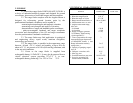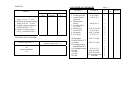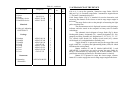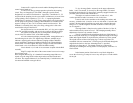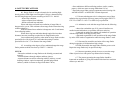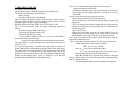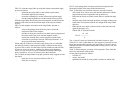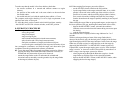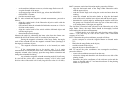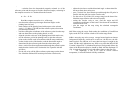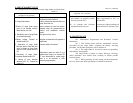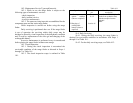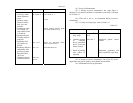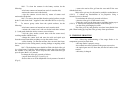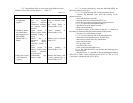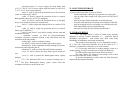- as the readiness indicator comes on, aim the range finder at an off-
set point forward of the target;
- as the target aligns with he reticle gap, release the MEASURE 1
(MEASURE L) button;
- read the measured range.
8.5. To take azimuth and magnetic azimuth measurements, proceed as
follows:
- align the vertical mark of the Binocular objective reticle with the
right-hand object;
- read and note down the azimuth dial indication accurate to 1/10 of a
division on the vernier;
- align the vertical mark of the reticle with the left-hand object and
read the angle again;
- determine the measured angle.
Measure the angle by subtracting the latter value from the former one.
Add 60.00 mils to the former value if exceeded by the latter one.
During the magnetic orientation of the range finder, the angles
read off the azimuth dial are the magnetic azimuth values (bearings) of
the target (or reference object).
The magnetic azimuth correction is to be inserted (see under
7.5.3.).
If the measurement has to be precise, take 3 or 4 angle
measurements to calculate the mean value. After each measurement of the
magnetic azimuth value (bearing), upset the range finder orientation and
change the azimuth dial reading.
An azimuth or magnetic azimuth measuring under 0.80 mils may
be read off the reticle with a maximum accuracy of 0.05 mils (small
division value of the reticle is 0.05 mils, large division value is 0.10 mils).
8.6. To measure vertical and elevation angles, proceed as follows:
- align the horizontal mark of the range finder Binocular reticle
with the upper object;
- read the vertical angle scale using the vernier and note down the
reading;
- rotate the azimuth and elevation knobs to align the horizontal
mark of the reticle with the lower object and read the scale again;
- determine the vertical angle by subtracting the smaller value from
the greater one if both have the same sign (are of the same color),
or by adding them, if the signs are opposite.
The elevation is measured with reference to the Binocular axis of the
range finder. Hence, the range finder should be thoroughly levelled
before taking the elevation measurements.
Vertical angles up to 0.80 mils and elevation angles falling
within ± 0.40 mils may be read off the reticle with a maximum
accuracy of 0.05 mils.
8.7. To determine the polar coordinates, proceed as follows:
- use the compass to orient the Angular Mount as directed under
7.5.3;
- Binocular the range finder on the object;
- read the azimuth of the object;
- range the object as directed under 9.3.
8.8. To convert the polar coordinates into rectangular coordinates,
proceed as follows:
- remove the coordinate converter from the case;
- release the clamp and detach the rule from the reverse side of the
plotting board;
- determine the polar coordinates of the reference point and the
target as directed under 9.7 and note them down on the plotting
board or a special card;



